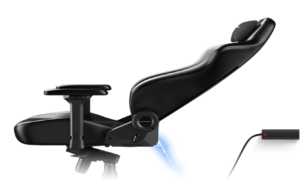Introduction
In today’s tech-savvy world, wearable technology has emerged as a game-changer, offering a seamless integration of digital devices into our daily lives. Whether it’s a smartwatch, fitness tracker, or even smart glasses, wearables have become an essential part of modern living. However, choosing the right wearable can be a daunting task, given the plethora of options available on the market. To make an informed decision, there are several factors you should consider before making your purchase.
Factors to Consider Before Your Purchase Wearable:
1. Purpose and Usage
Before diving into the world of wearables, it’s crucial to understand their specific purpose and usage. Different wearables serve different functions. Are you looking for a fitness tracker to monitor your workouts and health metrics, a smartwatch to receive notifications and stay connected, or perhaps something more specialized like smart glasses for augmented reality experiences? Knowing the primary purpose of your wearable will help you narrow down your options.
2. Compatibility with Your Device
Not all wearables are universally compatible with all smartphones or operating systems. Before making a purchase, ensure that the wearable you’re eyeing is compatible with your existing devices. For instance, the Apple Watch is primarily designed for iPhone users, while most Android wearables work seamlessly with Android smartphones. Failing to check compatibility can lead to frustrating user experiences and limited functionality.
3. Design and aesthetics
Wearables are not just about functionality; they’re also fashion accessories. Consider the design and aesthetics of the device. Does it match your personal style? Is it comfortable to wear for extended periods? You’ll want to feel good about how it looks and feels on your wrist or body. This is especially important if you plan to wear it daily.
4. Battery life
The battery life of a wearable is a critical factor. You wouldn’t want to charge your device constantly or have it run out of power during the day. Different wearables offer various battery life spans, so assess your needs. If you want to track your activities and receive notifications throughout the day without worrying about charging, look for a wearable with a longer battery life.
5. Display and Interface
The display and interface of a wearable play a significant role in the overall user experience. Some wearables feature touchscreens, while others rely on buttons or even voice commands. Consider your preferences and how easy it is to navigate the device’s interface. Additionally, evaluate the display’s quality, brightness, and readability, especially under different lighting conditions.
6. Health and Fitness Features
For those interested in tracking their health and fitness, pay close attention to the device’s capabilities. Check if it includes features like heart rate monitoring, GPS tracking, sleep analysis, and various fitness apps. Different wearables offer different levels of accuracy and detail, so choose one that aligns with your fitness goals.
7. Notifications and Connectivity
One of the primary functions of many wearables is to keep you connected. Assess the device’s ability to receive and manage notifications. Can it display messages, emails, and social media updates? Does it support calls and text messages? Also, consider the connectivity options, such as Bluetooth and Wi-Fi, to ensure seamless interaction with your smartphone or other devices.
8. Water resistance and durability
If you lead an active lifestyle or plan to wear your device during workouts or in adverse weather conditions, it’s vital to check its water resistance and durability. Many wearables are designed to withstand splashes, sweat, and even immersion in water, making them suitable for various environments.
9. App Ecosystem
The accompanying app ecosystem can significantly enhance your wearable’s functionality. Check the availability and quality of apps that can be integrated with your device. For instance, if you’re a fitness enthusiast, you might want access to fitness and nutrition apps that can sync with your wearable for a more comprehensive health monitoring experience.
10. Price and budget
Wearable technology comes at a wide range of price points. Consider your budget and how much you’re willing to invest in a device. Keep in mind that more expensive wearables may offer additional features and higher build quality. However, there are also many budget-friendly options that provide excellent value for money.
11. Brand Reputation and Customer Reviews
Research the brand’s reputation and read customer reviews before making your final decision. A reputable brand is more likely to provide reliable products and better customer support. Customer reviews can offer valuable insights into real-world experiences with the wearable, helping you make an informed choice.
12. Long-Term Support and Updates
Check if the manufacturer provides regular software updates and long-term support for your chosen wearable. Technology is continually evolving, and a wearable that receives regular updates is more likely to stay relevant and functional over time.
13. Privacy and Data Security
Wearable devices often collect sensitive data about your health, activities, and location. Make sure to read the privacy policy of the manufacturer and understand how your data is handled and protected. Look for devices that offer robust security features, like data encryption and user authentication.
14. Return Policy and Warranty
Before finalizing your purchase, review the return policy and warranty offered by the manufacturer or retailer. This can be crucial if you encounter any issues with the device or if it doesn’t meet your expectations. A good return policy and warranty can provide peace of mind.
15. Future-Proofing
Consider how future-proof the device is. Will it be compatible with upcoming software updates, or will it quickly become obsolete? Investigate whether the manufacturer has a history of supporting its older devices with new features and updates.
16. Customer Support
Lastly, assess the quality of customer support provided by the manufacturer or retailer. In case you encounter any issues or need assistance with your wearable, responsive and helpful customer support can make a significant difference in your overall satisfaction with the product.
Conclusion
Choosing the right wearable technology requires careful consideration of various factors. By understanding your purpose, assessing compatibility, and evaluating design, battery life, health features, notifications, and more, you can make an informed decision that perfectly aligns with your needs and lifestyle. Remember that a well-informed choice will lead to a more satisfying and functional wearable technology experience. Take your time to research, read reviews, and compare options to ensure you make the best decision for your wearable tech investment.



































